Admittedly, our western societies are based on performance and the race against time. From morning to night, with a majority of families where both parents work, the classes to which our children must be enrolled, homework, daycare, housework and meal preparation, there is less and less time for our schedules and energy to go outside and enjoy what nature has to offer. Add to this the fact that today it is almost unthinkable, especially for a child living in town or in a place without a fenced garden to play alone outside, without supervision, as we did at his age, sedentarization and the ubiquity of screens, and we end up with a society increasingly cut off from nature.

This problem, although not yet recognized in medical textbooks, has a well-known name in the fields of health and education. We speak of ” nature deficit disorder ” or ” trouble du deficit de nature ”, a term which we owe to the author and journalist Richard Lour who was the first to use it, in 2005, in his book Last Child in the Woods. This syndrome, you will understand, refers to the fact that children spend less and less time playing freely outdoors, especially in nature, which, for more and more specialists, is one of the causes major to many health problems such as childhood obesity, depression and behavioral disorders such as attention deficit disorder with or without hyperactivity. A study by researchers at the University of Illinois and published for the first time in the journal Applied Psychology: Health and Well Being, suggests that children with ADHD who play outside regularly much better than those who spend their time between 4 walls. Their concentration would be greatly improved as well as the control of their impulses. The same would be true for adults living with ADHD. And a simple period of 20 minutes per day, spent in a green space such as a park, would already be enough to observe the benefits.

Some loose numbers:
- According to the Center for Disease Control and Prevention, the number of children with obesity aged 2 to 5 increased by 36% in the United States between 1989 and 1999. 60% of them have a factor of higher risk of developing cardiovascular disease. The two main causes identified were the long hours spent daily in front of a screen and the lack of physical activity.
- In the European Union, childhood obesity is considered to be one of the biggest threats to public health affecting 3 million children.
- A British survey, commissioned by the Persil laundry brand and published in 2016, shows that 74% of children aged 5 to 12 spend less time outdoors each day than an inmate.
- In France, the Montaigne Foundation’s report highlights the fact that 10-year-olds spend more time in front of screens than at school.
- A 2016 Swiss survey indicates that children in French-speaking Switzerland play an average of 20 minutes a day outdoors and 32 minutes a day for those in German-speaking Switzerland. In the 1970s, they spent between 3 and 4 hours a day playing outside.
- In Quebec, a Quebec shoe and clothing company unveiled a study in 2018 indicating a significant drop in free outdoor play among children aged 3 to 12 in the greater Montreal region. Their figures indicated that children spent 45% less time on outdoor free play than their parents did. Only 23% of them play outside every day.
- In her book Come Play Outside, the occupational therapist and professor at the University of Francine Ferland points out that active play has decreased by 40% in 30 years while obesity has tripled.

The list of benefits that are recognized for children spending time in the wild grows from year to year. Whether we’re talking about the development of motor skills and imagination, the chance to learn and push your limits while managing risk, thousands of possible discoveries, increased concentration, better academic results, development of social skills, reduction of stress or more generally better development of children and better physical condition, we quickly come to wonder what could have caused, in a single generation, the profound change of our relationship with nature. For specialists, the answer is mainly fear. The pervasiveness of the media, which repeatedly reports dramatic events that make us believe, rightly or wrongly, that we live in a society that is dangerous for our children, has surely contributed to this fear. But we have to admit that today it is practically impossible to let our children play outside without supervision without feeling certain fear and judgment from our peers. And this fear is often transmitted to our children as in this example from the book “The Child in Nature” by Moïna Fauchier-Delavigne and Matthieu Chéreau published in 2019.
“A summer morning not far from Grenoble, in a holiday center, an educator starts a relaxation workshop in the countryside with a small group of 11-year-old girls. To begin with, she asked them to take off their shoes in the grass. The reaction is unanimous: “What? Barefoot ? Are you out of your mind ? It’s disgusting ! There are beasts. Only one girl finally dares to try the experiment. “She had never walked barefoot in the grass and found it great,” said the educator three years later, still marked by this experience.
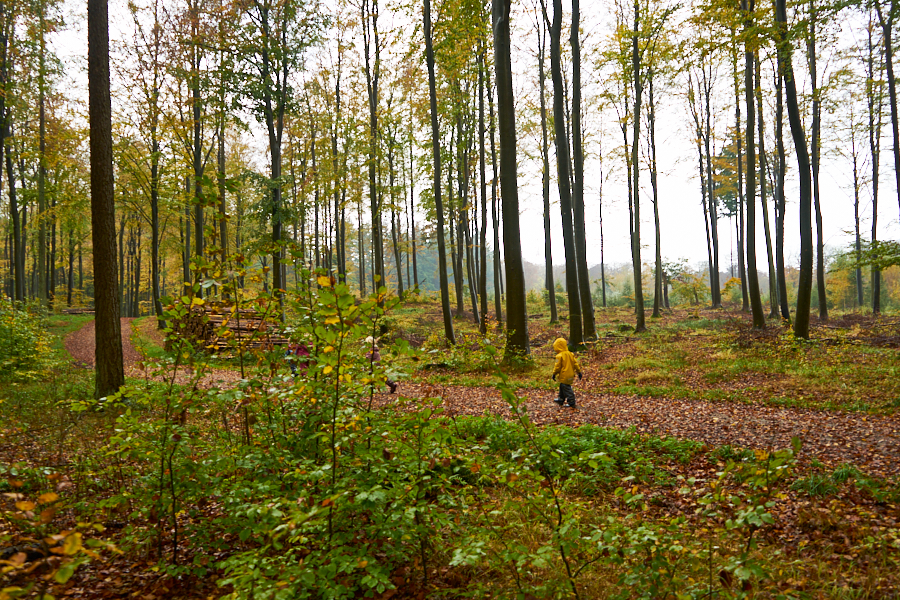
Faced with all these facts, more and more people are trying to find solutions in order to restore a little nature in the lives of children in the hope that it will become our normalcy again. Several initiatives are emerging all over the world, but also across Quebec. Before we left, we had the chance to meet some of these people trying to make a difference. Here is a first portrait! Given the length of the article, I will offer the other two in a few days!
Les explorateurs Montessori of Québec city
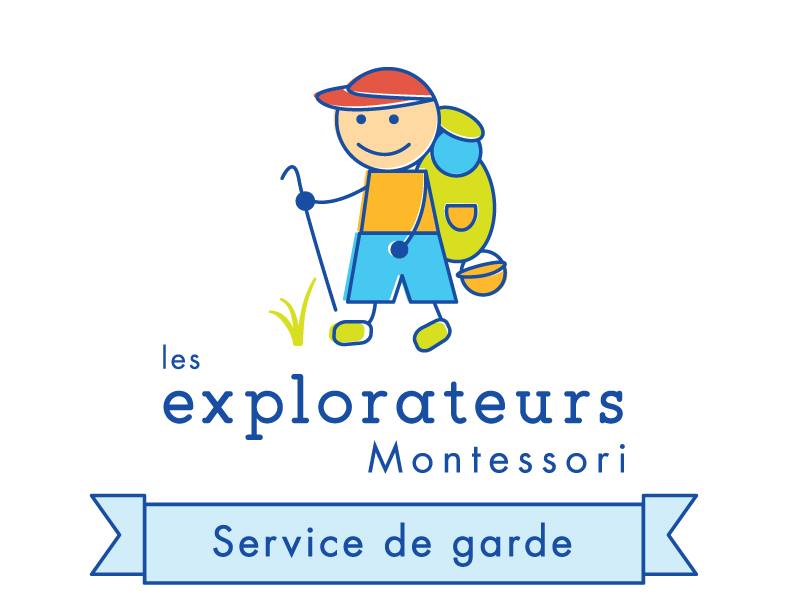
Located on boulevard Wilfrid-Hamel in Quebec City since September 2014, the installation Les explorateurs Montessori welcomes children from 18 months to 6 years old and are currently in the process of opening a nursery. Originally from Abitibi, the director and co-owner Sandra-Valérie Paquin considers that the fact that children do not have contact with nature as she was lucky to have it herself, is a gap in major cities. . In collaboration with her team and Maison O’Neil de Québec, located about 1.5 km from her facility, she therefore set up, in spring 2019, a project allowing a weekly outing to the forest from September to mid- June.
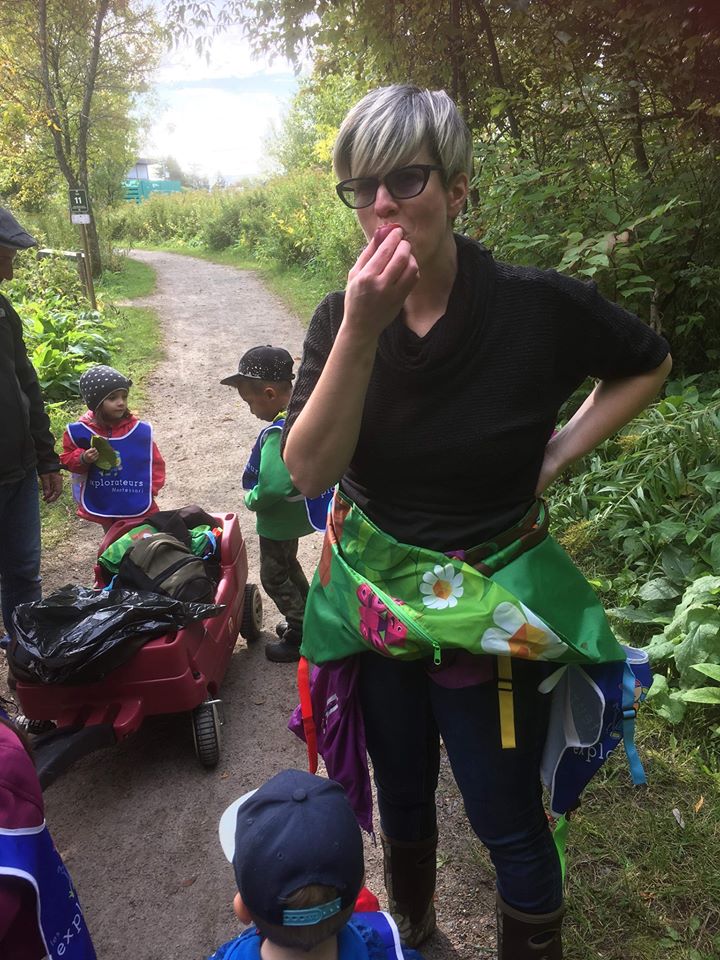
Above: Sandra-Valérie Paquin out with the children from her installation. Photo credit: Montessori explorers
During our visit, we had the chance to participate in their very first outing. Here, it has been decided that around 30 children will take part, in turn in order to facilitate transport and surveillance once there. For Ms. Paquin, the objectives of this project are: “to give children access to nature but also that they can explore free and active play. We want to let them explore their imagination through nature, allow them to ask questions, to be free in what they do.”
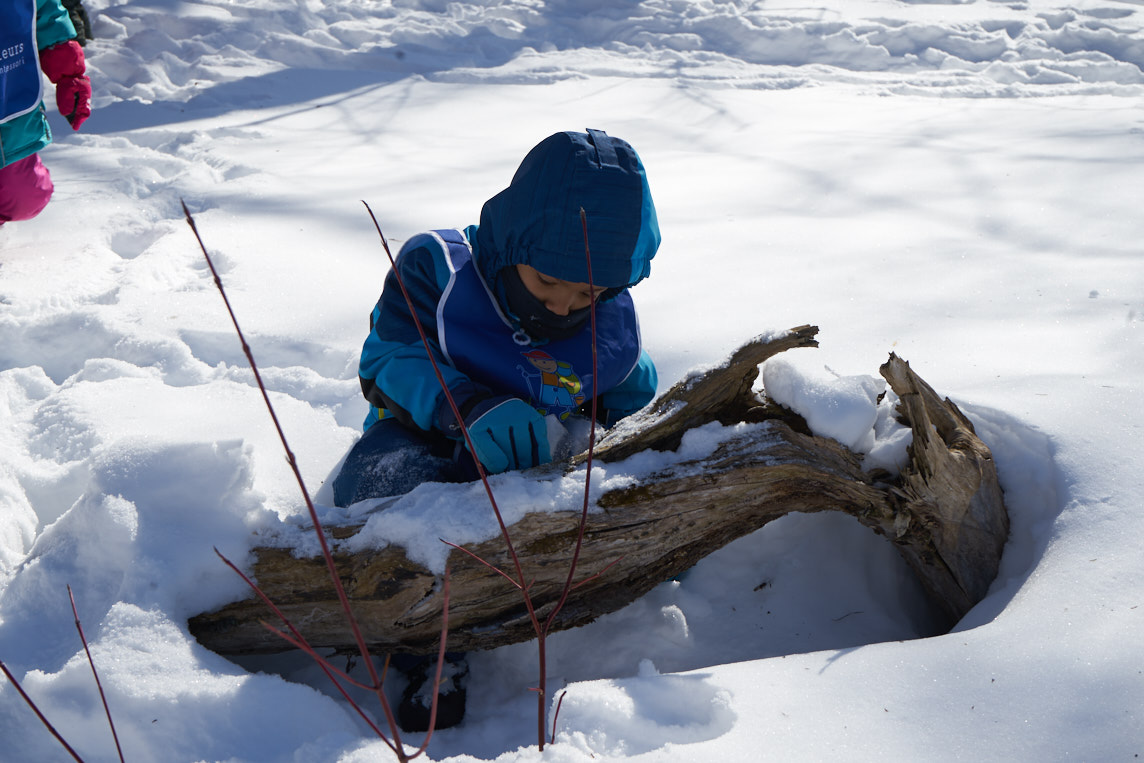
For her, adults are not there to initiate the game but to allow them to ask questions about what they are doing, both in risk management and in their interpretation. On the other hand, as she said, at least 20% of the children in her community never had the chance to go to the forest: ”sometimes you have to give them ideas, since it is not all children who are used to being in the woods like that. Once the ideas are there, they come on board and then we let them do it. ”

Here, children are transported by bus from the facility to Maison O’Neil, which is surrounded by beautiful woodland with a small river flowing. They obtained the right to build, on the spot, and with the children, a small shelter which transforms and improves with the passing of time and the seasons and which serves as gathering point and place where to read the history that ‘they bring on each outing for a moment of reading in the forest.
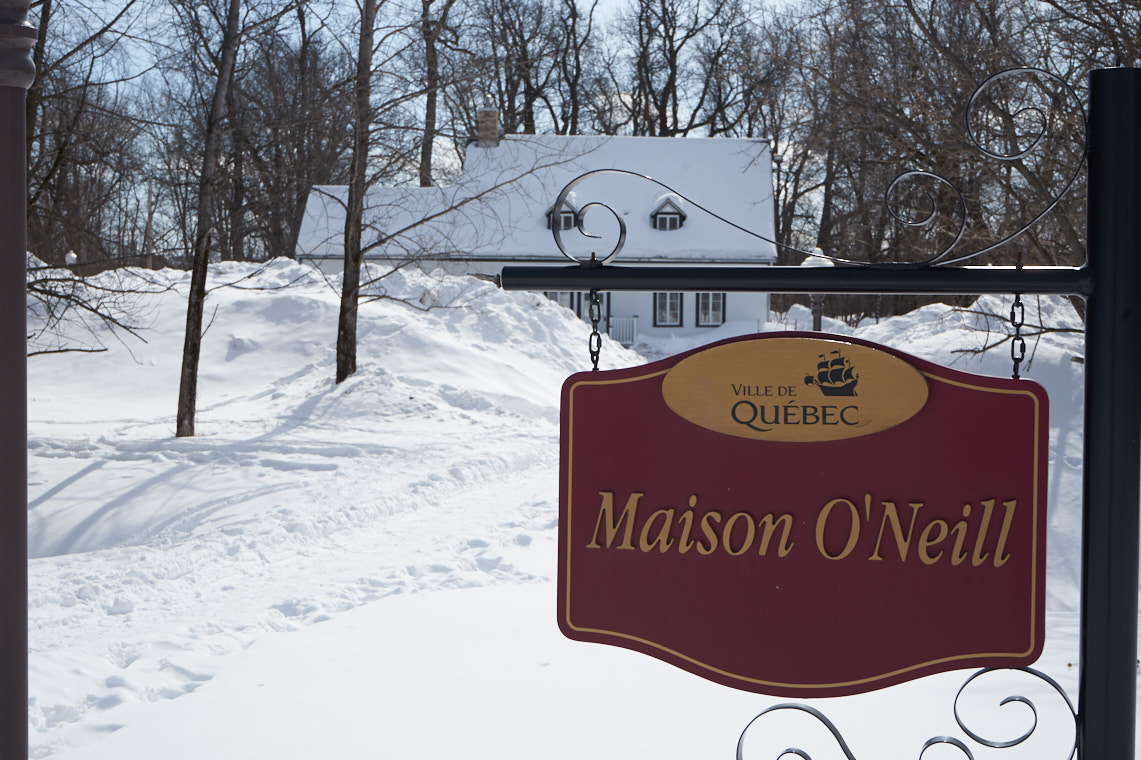

According to the director, the parents reaction to this innovation was very positive despite a little fear about risk management and the possibility of accidents. “Overall, they were very, very happy with this possibility,” she said.
Now that the project is well established, I had the chance to discuss with Sandra-Valérie Paquin a few days ago to see how her project was doing and if she had suggestions to make to those who might be trying to take this path.
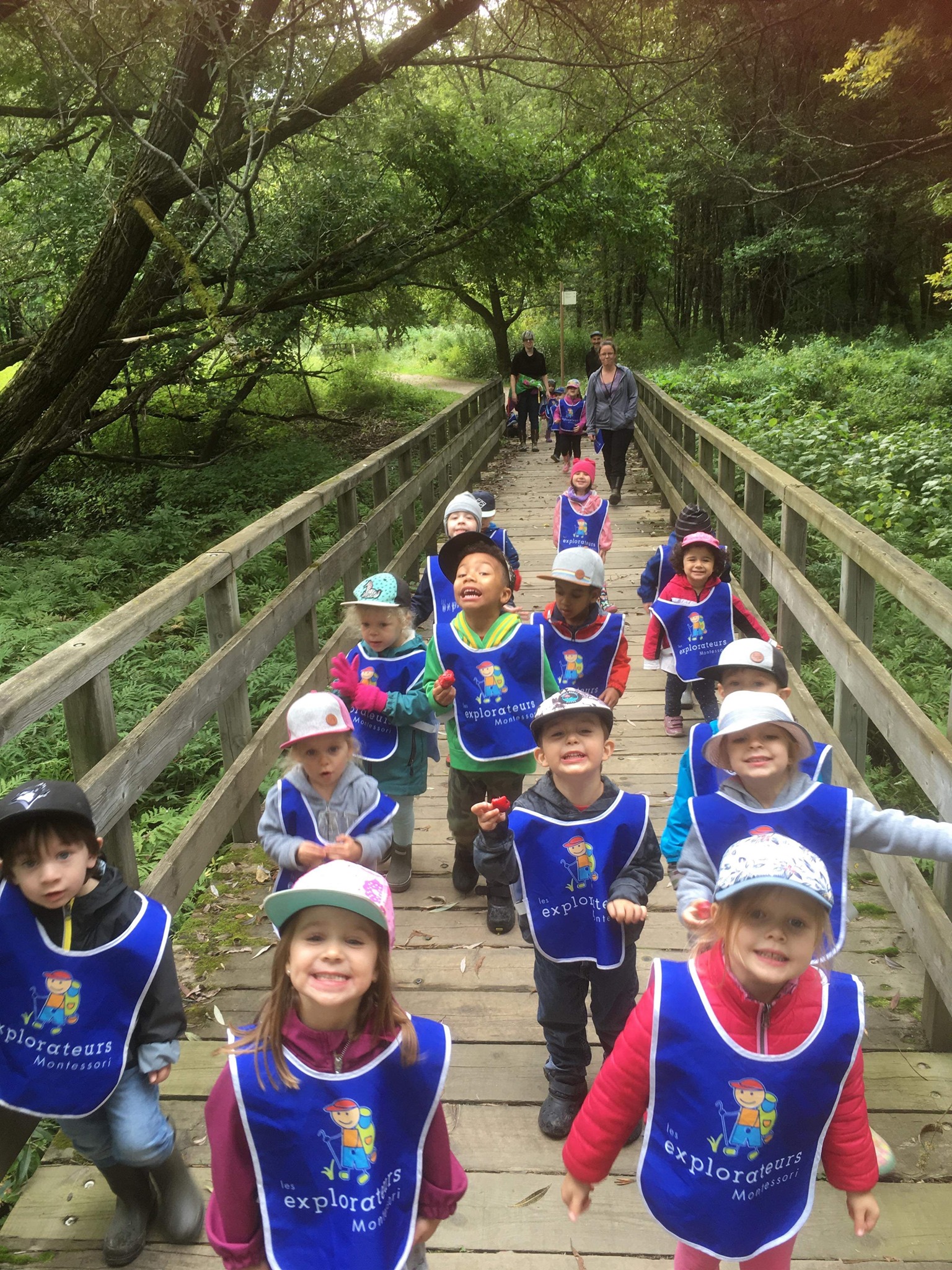
photo credit: Montessori explorers
Since September, outings have been held every week and for her, this is a project that remains easy to do and to which the staff of her establishment adapts well! Parents are more and more convinced of the benefits of it and now regularly offer to accompany groups during forest outings what she sees very positively: “They are very open to our project, they make us trust. We have a beautiful space, it must also be said that it is reassuring” she underlines.
The organization of these weekly outings is now well established. “Every Friday, I make a list of the kids who will be going the following week and I do a clothing reminder. This is where the big challenge lies. Items are often missing, but gradually the parents adjust. For transportation, I rent a small bus with 30 seats. We leave around 9am and return around 11am. Says Ms. Paquin.
Obviously, this rental at costs that are mostly financed by self-financing, parents only have to pay the difference: “It comes down to $ 3.50 per month, the price of a coffee, to offer an experience that will always be unforgettable for her child, ”she notes. For her, nothing beats the happiness of seeing toddlers make magnificent discoveries in the forest. “They are superb to see. During the first outing in September, they were even able to pick large cheekbones. Imagine the pleasure for them to climb trees and eat after a long walk”.

photo credit: Montessori explorers
In terms of security, the only incident that occurred was when thistles clung to the clothes of a few friends, she says, laughing. It will have allowed a moment of learning.
In terms of challenges, she will tell me that more than 3 out of 4 children love these outings, but that for some, those who have never been to the forest, adaptation is a little more difficult. “These children hang around a bit and ask to leave, which is a bit disappointing for us. So we discuss it with the parents, encouraging them to go out walking with their children, unless using the stroller”.
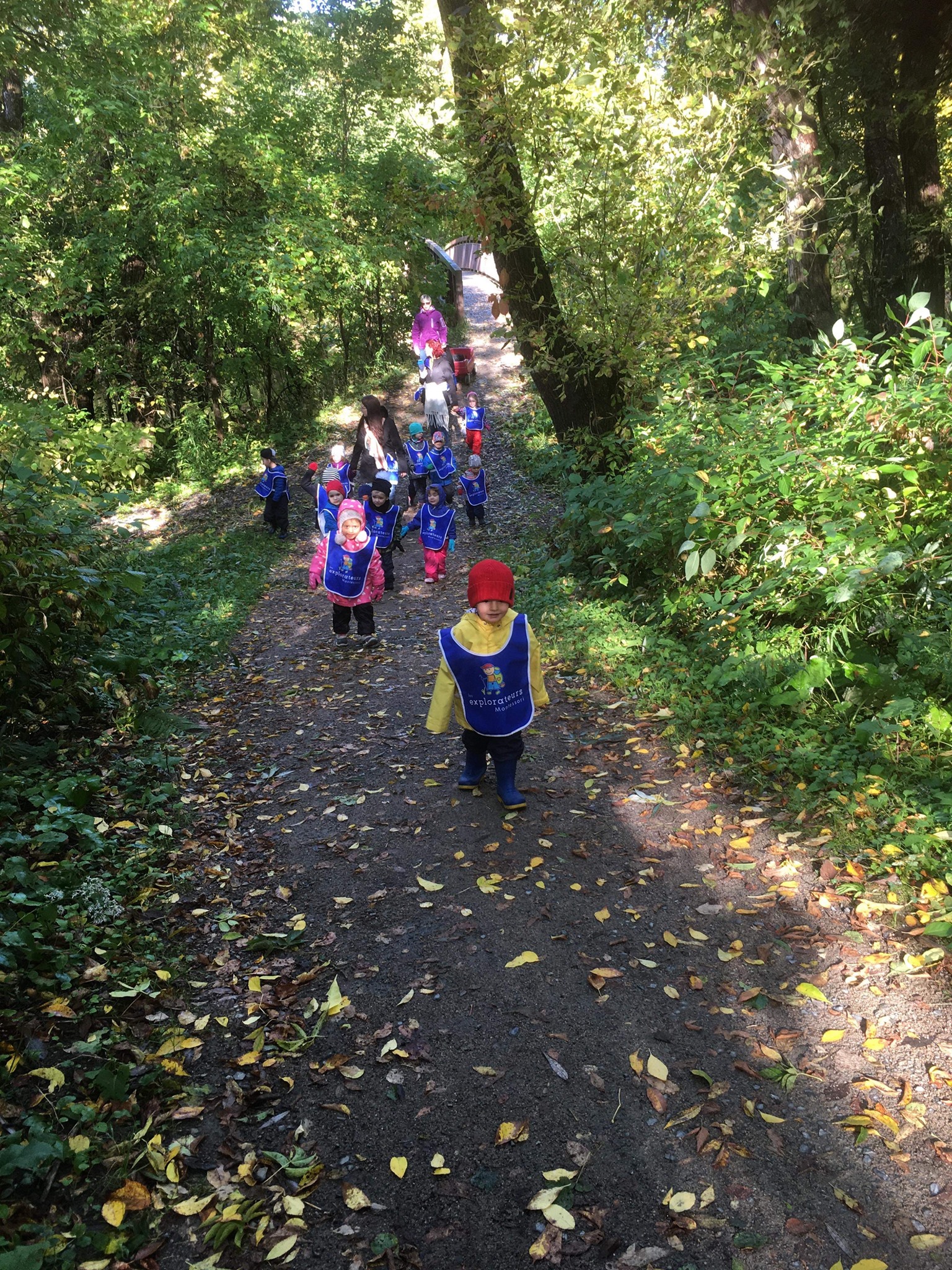
photo credit: Montessori explorers
During the outings, they built a “survival bag” containing a first aid kit, a walker and survival equipment that they always bring with them. In addition to this bag, there is always a book for the reading period and a small cart that allows children to pick up branches, leaves or other objects they find in the forest, which they particularly appreciate.
This beautiful project is now well anchored in the routine of the establishment and no turning back is envisaged. What a great initiative!
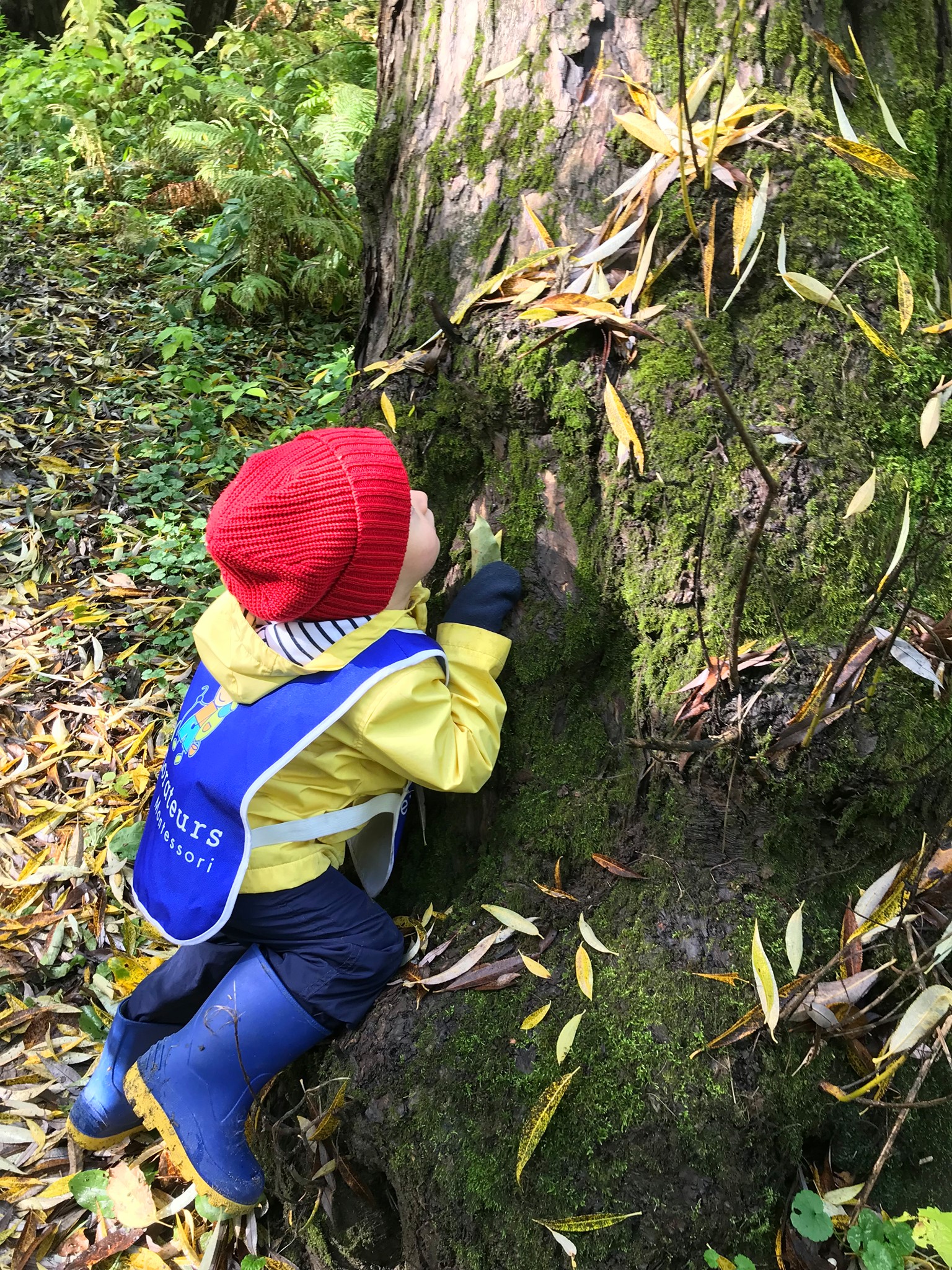
photo credit: Montessori explorers
See you soon for the second part of this article!
For further:
Book: L’enfant dans la nature: https://www.fayard.fr/documents-temoignages/lenfant-dans-la-nature-9782213712161
Book: Last Child in the Woods: http://richardlouv.com/books/last-child/
Book: Viens jouer dehors: https://www.editions-chu-sainte-justine.org/livres/viens-jouer-dehors-232.html
Les explorateurs Montessori de Québec: https://www.explorateursmontessoriquebec.com/
https://www.facebook.com/montessoriquebec/